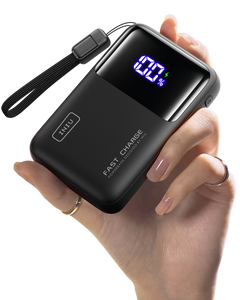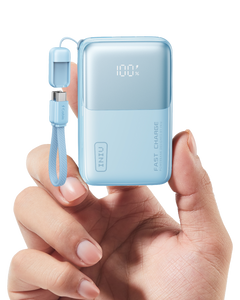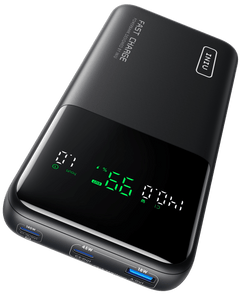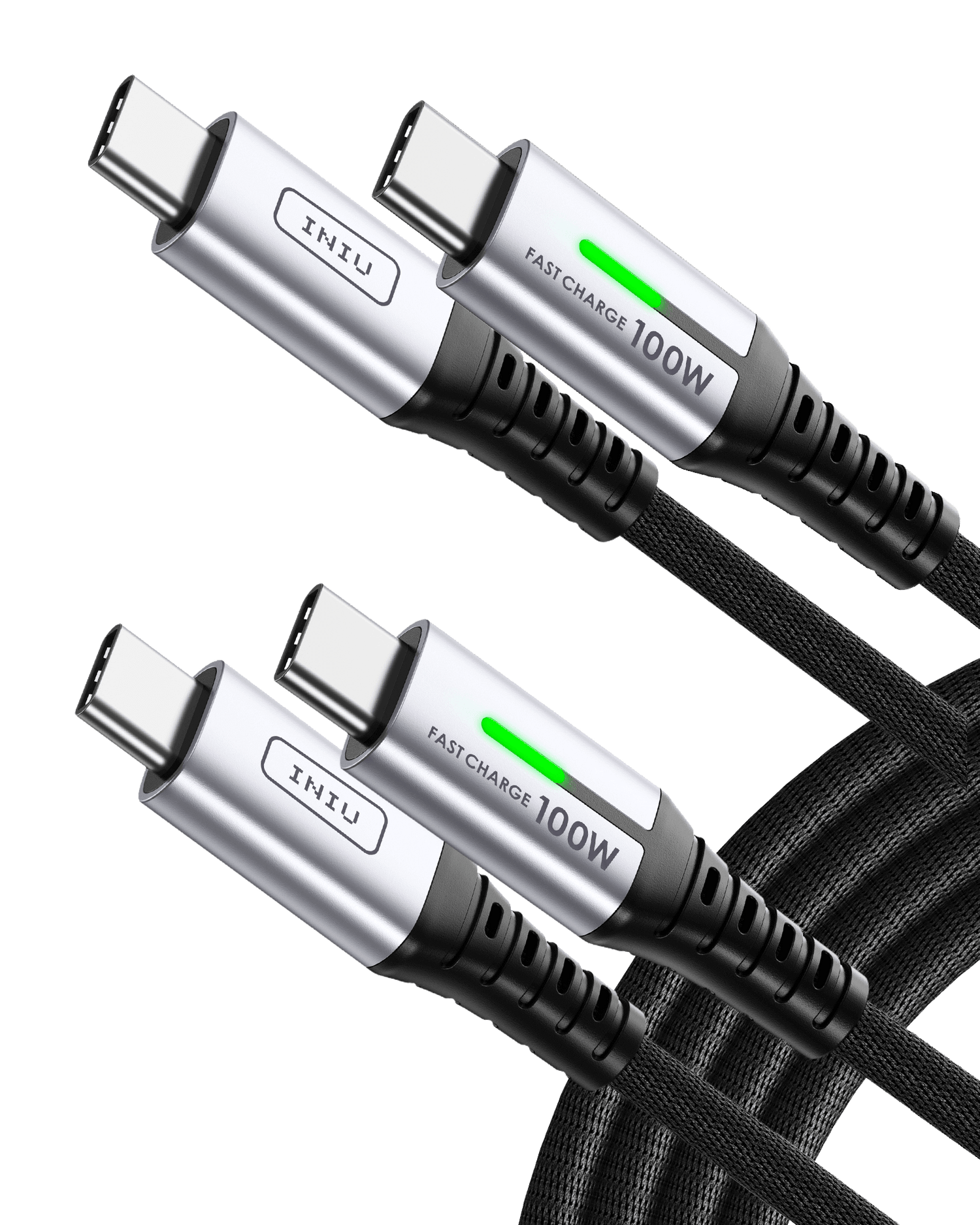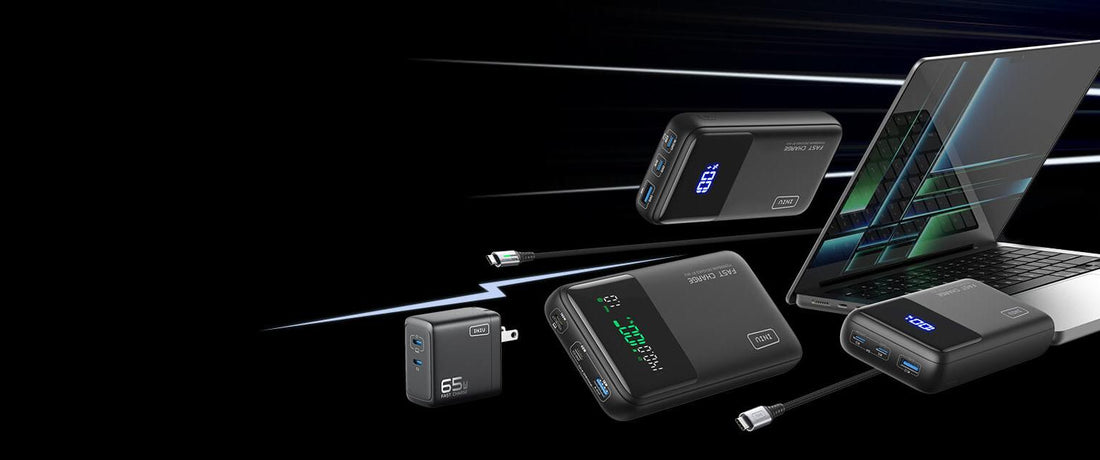
Do You Really Need a 20,000mAh Power Bank?
Let's paint a picture. You're in a crowded airport, and your flight is delayed. Your phone, containing your boarding pass, your connection to family, and your only source of entertainment, is flashing that terrifying, single-digit battery percentage. The public charging stations are all occupied, a battlefield of tangled cables and desperate travelers. That familiar knot of panic tightens in your stomach. We call it "low battery anxiety," and it's the modern-day curse of being disconnected in a world that demands we stay plugged in.
The market offers a tempting solution: a portable power bank. But a quick online search throws you into a spiral of confusion. You see sleek, pocket-sized chargers, and then you see them: the big ones. The hefty bricks labeled "20,000mAh" or more. The question immediately pops into your head: Is bigger always better? Do I really need a 20000mAh power bank?
The truth is, what's a game-changer for one person is just a heavy, expensive paperweight for another. This guide is here to cut through the noise. We'll demystify the tech jargon, help you honestly assess your needs, and finally determine if a large power bank is the key to unlocking your digital freedom or simply more than you need.
What Does "mAh" Actually Mean?

Before you can decide if 20,000mAh is your magic number, you need to understand what you're actually buying. That "mAh" figure is the headline spec, but it's dangerously misleading if you don't grasp the full picture.
A Simple Analogy: Your Power Bank as a Water Tank
Let's make this easy. Imagine your power bank is a water tank and your phone's battery is a water bottle. The "mAh" (milliampere-hours) simply measures the capacity of the tank. A 10,000mAh power bank is a 10,000-liter tank; a 20000mAh power bank is a 20,000-liter tank. The bigger the tank, the more times you can refill your bottle. On the surface, it's that straightforward: more mAh equals more potential charging power.
The Crucial Detail: Real-World Efficiency
You do the math: "My new phone has a 5,000mAh battery. My 20,000mAh power bank should charge it four times flat!" But then, in reality, you barely get three charges. What gives?
The culprit is efficiency loss, an unavoidable "tax" on energy transfer. Think of your water tank again, but this time, imagine the hose you're using to fill your bottle is a bit leaky. You'll always lose some water on the way. The same happens with electricity. Energy is lost due to:
Voltage Conversion: The lithium-ion cells inside a power bank operate at a standard voltage (usually 3.7V), but your phone charges at a higher voltage (5V, 9V, or even 12V for fast charging). "Stepping up" that voltage is an inefficient process that burns off energy.
Heat: Both the power bank and your phone get warm during charging. That heat is wasting energy.
Circuit Resistance: The internal components of the power bank and the charging cable itself have resistance, which also contributes to minor energy loss.
A decent quality power bank has a real-world efficiency of around 65-75%. So, a 20000mAh power bank doesn't actually deliver 20,000mAh to your devices. It delivers a usable capacity closer to 13,000-15,000mAh. Knowing this prevents disappointment and helps you make a much smarter buying decision.
Who Actually Needs a 20,000mAh+ Power Bank?
Now that we understand the real-world numbers, let's get to the heart of it. A large power bank isn't for everyone, but for some lifestyles, it's not just a convenience—it's an absolute necessity. If you find yourself nodding along to any of these profiles, a 20,000mAh model is calling your name.
The Frequent Traveler & Digital Nomad
You live out of a suitcase. Your "office" is a cramped airplane seat, a bustling train, or a charming café with exactly one power outlet. Your pain is the constant juggle of dying devices: your phone holds your boarding pass and hotel confirmation, your noise-canceling headphones are your sanctuary, and your tablet or laptop is your lifeline to work. A tiny 5,000mAh charger is a joke—it won't even get you through a single travel day.
For you, a 20000mAh power bank is your command center. It's the singular solution that keeps your entire tech ecosystem alive for days without you ever needing to hunt for a wall socket. It's the freedom to navigate, work, and relax without compromise. It is, without a doubt, the best power bank for travel.
The Outdoor Adventurer & Camper
When you're deep in the backcountry, miles from civilization, power is not a luxury; it's a critical piece of gear. That trail map on your phone isn't just for fun; it's your guide back to safety. Your headlamp is essential after sundown. Your GPS beacon is your emergency lifeline.
In this environment, a large power bank is as vital as your tent. It's the reliable, off-grid energy source that ensures your safety and navigation tools are always ready. It means you can capture all the photos and videos of your adventure without draining your phone's battery. It's modern preparedness for the modern explorer.
The Family on the Go
You know the scene all too well. You're an hour into a long road trip. From the back seat, you hear the first dreaded whine: "My tablet's almost dead!" It's quickly followed by a chorus from your other kids, and then your spouse realizes their phone is low, too. The single car charger becomes a source of intense family negotiations.
Enter the peacemaker: a 20000mAh power bank with multiple ports. It's the hero that can charge two iPads and a phone all at once. It's the magic wand that transforms backseat bickering into the golden, peaceful silence of screen time. Many large-capacity power banks have the function of charging multiple devices at the same time, which is enough to provide sufficient convenience for your family members.
The Power User & Tech Enthusiast
Your pockets and bag are a tech arsenal. You're juggling a flagship smartphone, a smartwatch, high-fidelity earbuds, and maybe a power-hungry gaming device like a Nintendo Switch or Steam Deck. You might even be a creator with a GoPro or a DJI drone. You demand peak performance, and that means you burn through battery life at an alarming rate.
This is where a high-end 20000mAh power bank becomes your best friend. Look for one with modern features like Power Delivery (PD). This turns it into a fast charging power bank, capable of blasting your phone from 0 to 50% in under 30 minutes. Even better, models with high-wattage outputs (65W, 100W, or more) give you the incredible ability to charge a laptop with a portable charger. Yes, your MacBook Air, Dell XPS, or other USB-C laptop can be powered up right from your backpack. This versatility is a game-changer for mobile productivity.
The Emergency Prepper
Power outages are no longer a rare occurrence. Whether it's a blizzard, a hurricane, or just a failing local grid, being without power for hours—or days—is a real possibility. In an emergency, your phone is your connection to the outside world. It's your news source, your flashlight, and your way to contact loved ones.
A fully charged 20000mAh power bank is a non-negotiable part of any modern emergency kit. It holds enough juice to recharge a family's phones multiple times over several days, providing a profound sense of security and ensuring you stay connected when it matters most.
When is a 20,000mAh Power Bank Overkill?

Let's be honest: for all its power, a large power bank has one major drawback: it's big and heavy — at least bigger than most 10,000mAh power banks. The trade-off for capacity is portability, and for many people, it's a bad trade.
The Daily Commuter & Light User
Your daily routine involves going from home to the office and back. You just need a little security blanket to ensure your phone survives the evening commute after a long day of use. Lugging around a half-pound brick for a 30% top-up is impractical. The constant thud of it in your bag is a reminder of its overkill nature. A slim 5,000mAh or 10,000mAh unit that disappears into your pocket or purse is a far smarter and more comfortable choice.
The Minimalist
You live by the mantra "less is more." Every item in your bag is carefully curated for function and weight. The idea of adding the bulk of a 20000mAh power bank just "in case" goes against your entire philosophy. You'd rather be more mindful of your charging habits than carry an extra pound of gear you might not even use. For you, the weight is not worth the hypothetical convenience.
A Quick Note on Air Travel Regulations
A huge point of anxiety for prospective buyers is the airport security line. "Will they confiscate this giant battery?" Relax. The answer is a clear no, as long as you follow one simple rule: power banks go in your carry-on, never in checked luggage.
Aviation authorities like the FAA regulate batteries by Watt-hours (Wh), with a generous limit of 100Wh per battery without special airline approval. The calculation is simple: (mAh / 1000) * Voltage = Watt-hours. Since most power banks use 3.7V cells, a 20000mAh power bank comes out to (20,000 / 1000) * 3.7V = 74Wh.
This is comfortably under the 100Wh limit. TSA agents see thousands of these every day; as long as it's in your carry-on, you are good to go.
How to Choose the Right Capacity for YOU
Ready to make a confident choice? This simple three-step checklist will lead you to your perfect power bank.
Step 1: Know Your Arsenal
First, list the devices you need to keep charged on the go. Knowing their approximate battery sizes is your starting point.
Flagship Phones (iPhone 17, Galaxy S24): ~3,300mAh to 5,000mAh
Tablets (iPad, Galaxy Tab): ~7,000mAh to 10,000mAh
Handheld Gaming (Nintendo Switch): ~4,300mAh
Headphones, Watches, etc.: Relatively small, but they add up.
Step 2: Define Your Mission
How long do you need to be independent from a wall outlet? Be realistic about your usage.
Daily Survival: You just need 1 full phone charge to get home stress-free.
Weekend Getaway: You'll need 2-3 full phone charges, maybe a top-up for your headphones.
The Long Haul (Travel/Camping): You need 4+ phone charges, plus power for tablets, cameras, or even a laptop.
Step 3: Do the Simple Math
Now, let's put it all together using our real-world efficiency factor (we'll use 0.65, or 65%, to be safe).
(Device mAh * Number of Charges Needed) / 0.65 = Your Ideal Power Bank mAh
Real-World Example: You have an iPhone 17 (~3,692mAh) and are planning a 3-day trip. You want to guarantee at least 3 full charges.
(3,692mAh * 3) / 0.65 = 17,040mAh
The math is clear. A 10,000mAh power bank won't reliably meet your needs. A 20000mAh power bank is the perfect choice, giving you the power you require with a healthy buffer for peace of mind.
At-a-Glance Capacity Guide
5,000mAh (The Pocket Saver): ~1 phone charge. Perfect for emergencies, concerts, or a night out.
10,000mAh (The Daily Driver): ~2-3 phone charges. The best all-around balance of size and power for daily use and short trips.
20,000mAh (The Workhorse): ~4-6 phone charges. The champion for travelers, families, and tech enthusiasts. The only choice if you need a fast charging power bank for multiple devices or want to charge a laptop with a portable charger.
20,000mAh+ (The Beast): For true off-grid living, professional field work, or powering a mobile office for days on end.
Powering Your Life, Your Way

So, let's return to our original question: Do you really need a 20000mAh power bank?
By now, you know the answer isn't a simple yes or no. It's about you. It's about your life, your devices, and your tolerance for that dreaded red battery icon. The best power bank isn't the one with the biggest number; it's the one that fits your life so seamlessly you forget you're even carrying it—until it saves your day. You now have the knowledge to choose with confidence. So, look at your life and your needs, and decide if you're ready to finally end battery anxiety and embrace the power of true portable freedom.



